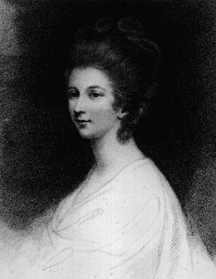User:Lnd53139/sandbox

Introduction
[edit]Henrietta is a mid-eighteenth-century novel written by Charlotte Lennox, a Scottish author, poet, and playwright, and most-well known for her novel, The Female Quixote. In the story, Henrietta, Lennox tells a story of a young, beautiful heroine who was pushed out to live in a strange environment without family, without friends, and without money. She was forced to learn and survive in such environment by herself. Henrietta shows a realistic sense of women in the eighteenth-century that struggles in life by all herself. Though, Lennox was famous for her novel, The Female Quixote, but Henrietta was not generally well-known, although, it was sold well. Henrietta is Bildungsroman, which is the novel of education that focuses on the development of character. Lennox uses Comedy of Manners in Henrietta, which is a genre explores different types of people and their habits of behaviors (manner).
Plot Summary
[edit]Henrietta first appears in the story as a miserable woman, who has neither home nor money. She flees away from her aunt, Lady Meadow, who is hypocritical that obsesses with the family pride. She forces Henrietta to convert into Roman Catechism and forces her into a marriage with whom she acquaintances to sir Isaac Darby. She refused to marry sir Isaac Darby and ran to Lady Manning. At lady Manning’s place, Henrietta gained the affection of lady Manning’s lover. She’s afraid of Henrietta that threatens her relationship, so she offers a marriage proposal for Henrietta to her worker, Mr. Jones. Henrietta, once again, rejects the marriage proposal and runs away from lady Manning. While she wanders in a rainy day, a coachman lets her into his ride. Later, she meets a wealthy lady, Ms. Woodby, in a horse ride and forms a violent friendship, which is best friend. She called Henrietta as Clelia, and called herself as Celinda. Ms. Woodby suggests Henrietta stay in her friend’s place, Mrs. Egret, whom she writes a letter to explain the Henrietta’s situation. Henrietta carries the letter and heads to Mrs. Egret’s place. However, the coachman makes a mistake and takes Henrietta to Ms. Eccles’s house.. She ends up staying at Ms. Eccles, a millener. She writes a letter to Ms. Woodby, expressing her anger of all those unfortunate thing happened to her. Later on, she is scared and feared. Then she received a mail from Mr. Damer, her father’s friend, that he would support her by constantly sending her money. Young Damer meets Henrietta and fells in love with her. Henrietta finds out the truth that Young Damer already married. Later, Henrietta struggle to support herself, so she takes various jobs as lady maids. Later, she accompanies Ms. Belmourn to London where she meets Melvil and Freeman. Melvil fells in love with Henrietta. They decided to have marriage, but Henrietta do not have money for the dowry. In order to get enough money for the marriage, she decided to take Ms. Meadow’s offer to get her inheritance. But, old Damer, who was her father’s friend, gives her the 10,000 pounds needed for the marriage. Henrietta and Melvil marries and lives together.
Characters
[edit]Henrietta is a young, beautiful woman of her age, but she has a tragic life. Her parents passed away when she was young, so she lives with her aunt, Lady Meadow, until she is forced to marry sir Isaac Darby, whom she doesn’t love. Lady Meadow is a hypocritical person that obsesses with family pride and money. She also forced Henrietta to convert into Catechism. Under a constraint life by Lady Meadow, Henrietta runs away from home to another aunt, Lady Manning. Here, she also receives lots pressure and jealousy from Lady Manning because of her beauty that appeals to Lady Manning lover. Lady Manning-obsessed with the title and she is poorly educated. To keep Henrietta away from her lover, she offers Henrietta a marriage to Mr. Jones. Once again, Henrietta runs away, struggles, and learns how to live in this cruel world.
Outline the structure of the Novel
[edit]In Henrietta, Charlotte Lennox organizes the novel into two volume and books and smalls chapters, which was an abnormal writing style in 18th century. Each volume contains four books, and each book contains several chapters. Each chapter is the short story of Henrietta. Moreover, Lennox had a brief description of each chapter. Chapter story was a new concept in this era.
Narrator’s Tone or Perspective
[edit]The story of Henrietta is based on her perspective. She views everything in a critical way, in which after the incident of Mrs. Egret, she writes a letter to Ms. Wooby to express her anger. However, as the story develops, she becomes more calm toward the problems.
Novel Theme
[edit]In Henrietta, the story’s theme is trust, in which Henrietta is very naïve that she easily trusts everyone. She trusts Ms. Wooby in arranging a place to stay at Mrs. Egret, but she ends up staying at Ms. Eccles’s house. She also trusts her two aunt, Lady Meadow and Lady Manning, which is her only relatives after the death of her parent. However, they force Henrietta to marry someone she doesn’t love for their desires. Later, Ms. Wooby, who supposes to be Henrietta’s violent friend, seduces the man whom she has interested in.
Novel’s overview
[edit]Henrietta is a young, beautiful maiden who lost her both parents. She loves the freedom that she runs away from her close family in which they want to marry her off. On her journey, she learns to survive in this world.
Reference
[edit]Lennox, Charlotte, Ruth Perry, and Susan Carlile. Henrietta. Lexington, KY: U of Kentucky, 2008. Print.
